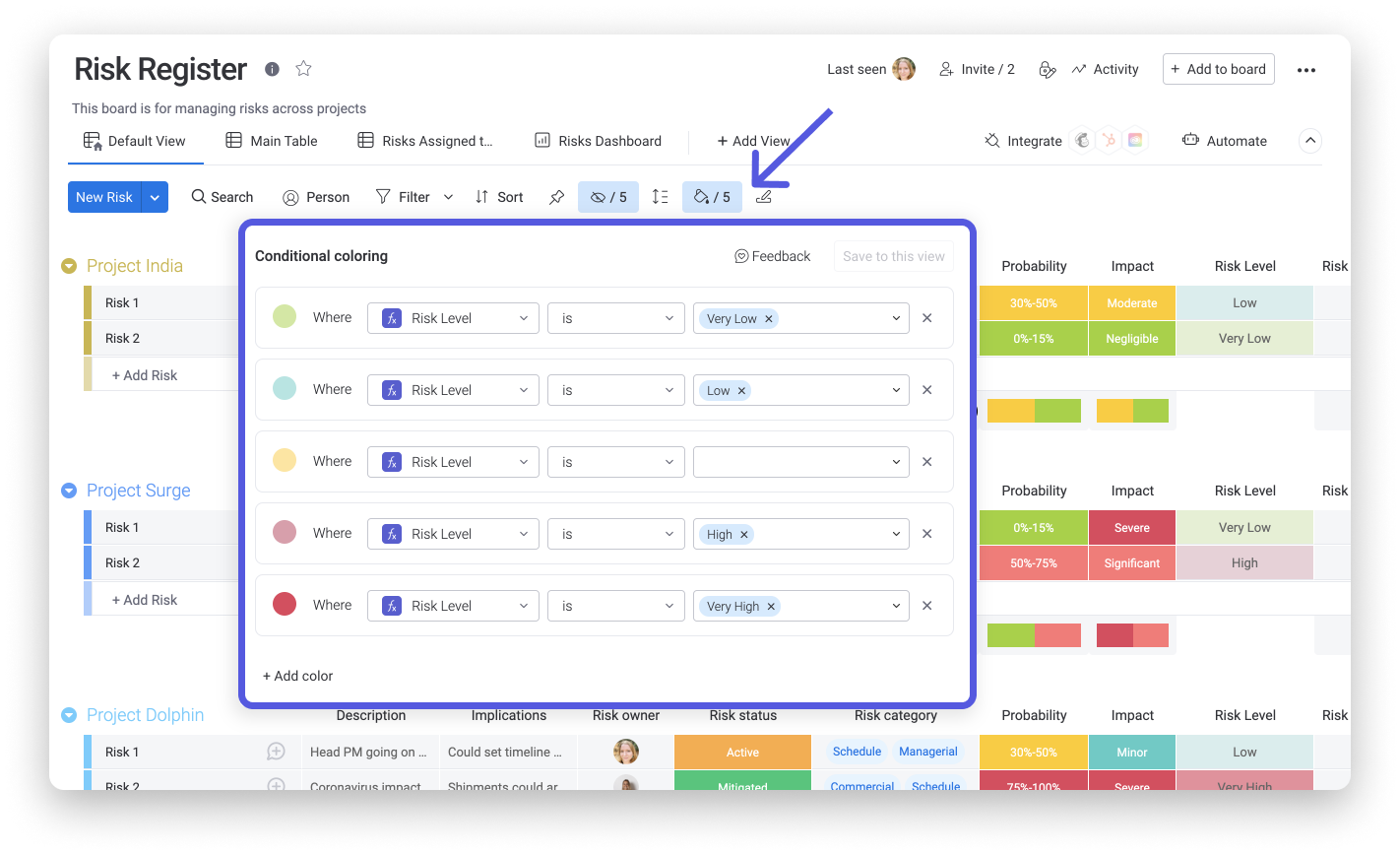Project assumptions are part of every project management cycle. Project managers assume that they’ll have the appropriate budget and talent to complete the project on time.
The fact of the matter is that assumptions can be proven wrong at any time. That’s why it’s essential for project managers to have a deep understanding of what project assumptions are and how to properly identify them during each phase of planning a project. Learn more about project assumptions and why they’re so important, and discover how monday.com can help you initiate and execute projects successfully by managing project assumptions.
What are project assumptions in project management?
According to the Project Management Institute, the definition of a project assumption is “any factor relating to a project that is considered to be true, real, or certain — without any empirical proof or demonstration.” In other words, project assumptions are simply the things you assume to be true for your project’s success.
Naturally, these assumptions will vary with each phase of the project lifecycle. What’s more, since these “things” you assume to be true may or may not actually occur, project assumptions will always come with inherent risks.
Your project assumptions can reflect many different aspects:
- You assume your team will complete milestones according to schedule
- You assume suppliers will deliver the right items on time
- You assume that your employees are capable of completing necessary tasks
- You assume weather or acts of God won’t interrupt your progress
- You assume costs won’t change throughout the course of the project
Related reads:
Types of project assumptions
Here are a few examples of project assumptions that will help you in your research and documentation.
- Critical assumptions: key assumptions that significantly affect project outcomes, such as budget constraints and resource availability.
- External assumptions: factors beyond your control, like market conditions and supplier reliability.
- Internal assumptions: related to the internal workings of the project, such as team capabilities, human resources, and internal processes.
- Time-based or scheduling assumptions: related to the project timeline, like task completion and milestone achievement.
- Environmental assumptions: external environmental factors like weather or regulatory changes that could impact the project.
Why are project assumptions important?
Realistically, it’s impossible — and irresponsible — to plan a project without making assumptions. False assumptions without backup plans can hinder your project at any phase of the project management lifecycle or impact the quality of your deliverables.
This is why project assumptions are so important — because it’s impossible to foresee every variable within a project from initiation to completion.
The most important thing to understand about project assumptions is that they’re just that—assumptions, and with assumptions come risk. In the project planning process, identifying these assumptions is vital to planning for potential risks that could affect your schedule, budget, or other aspects of the project.
For example, your resource allocations will undoubtedly align with the assumption that you’ll have the necessary resources — talent, funds, materials, etc. — available to you as needed. But it’s important to remember that resources may run out, so consider your assumptions in the initiation, planning, and execution phases to prevent the negative impact they may have should your resources run out.
What is the connection between project constraints, dependencies, risks, and assumptions?
For many project managers, the distinctions and connections among project assumptions, constraints, dependencies, and risks aren’t always so clear.
Here’s a quick overview:
Constraints are the limitations that you and your team must work within. Project constraints typically include the following:
- Your budget
- Your timeline
- Your resources
Read more about project constraints here
Project Dependencies are any tasks or activities that rely directly on the completion or initiation of another task or activity. They often arise as a result of project constraints. For example, let’s say you have a task that needs to move to the next phase but can’t without the approval of the client or a stakeholder. This next phase would be the dependency.
Risks are any unexpected events that can crop up and affect your project. Risks don’t always have to be negative, especially if you’ve identified your assumptions appropriately and made a plan for their occurrence.
With these definitions in mind, let’s look at how to use project assumptions to move effectively through the project management life cycle to minimize costly mistakes and avoid blind spots.
Best practices for managing project assumptions
When it comes to managing project assumptions, you’ll want to take a proactive approach and follow these best practices:
Assess every potential assumption
The phrase “I think” will occur left and right during the initiation and planning phases of the project. Consider everything that follows “I think” to be an assumption, make a list of them, and then narrow that list down to the most realistic assumptions.
Be sure to view every assumption with an appropriate amount of skepticism, and think about the likelihood of it happening, as well as what the realistic consequences of each assumption would be. Then think about how you can mitigate those consequences.
Pro tip: look at previous projects and project assumption logs to see if there some mistakes from the past that you could avoid on your current project.
Communicate the assumptions to all stakeholders
It’s not enough that your project team knows these assumptions –you also need to communicate with all key stakeholders which could include clients, suppliers, and higher management.
By sharing with everyone you not only minimize project risk but you can also gain valuable feedback and ideas for alternative solutions.
Here’s a quick checklist to ensure you’ve communicated your assumptions effectively:
- Document all your assumptions: write down assumptions in a formal document that is easily accessible to all key stakeholders.
- Regular updates: schedule regular meetings or updates to discuss any changes in assumptions and their potential impacts.
- Seek feedback: encourage stakeholders to provide feedback and suggestions on the assumptions.
- Set clear expectations: clarify what each assumption implies for project timelines, budget, and resource allocation.
- Assign responsibility: make sure there’s someone accountable for monitoring and communicating these assumptions throughout the project lifecycle.
By proactively communicating your assumptions, you foster a more cohesive and resilient project environment, enhancing the likelihood of achieving your organizational goals and maintaining excellent performance.
Integrate the assumptions
Once you’ve identified and assessed the potential assumptions throughout the project’s future life cycle, you’ll need to incorporate them into your project planning.
This means including assumptions about the following:
- All planned tasks
- Each point within the project’s timeline
- The overall budget
- Your resources
- Your project team members
Maintain control
Since assumptions can potentially hinder your project, you’ll need to remain vigilant in monitoring your assumption integrations. If you don’t monitor your assumptions throughout the life of the project, you won’t be able to enact your contingency plans where appropriate. This can easily done through regular meetings with team members and by consistently monitoring project metrics.
Do a post-project review
Once the project is complete, it’s a good idea to review the assumptions and your process for evaluating them as part of a post-project review.
This will allow you to gain unique insights for the next project as you’ll get a full view of how the project went, what went wrong, and which contingency plans worked best. Your your post-project review should include:
- Project summary
- Team members and responsibilities
- Expectations and outcomes
- Notes on how your project transitioned from phase to phase
- A detailed summary of project budget and expenses
- Project milestones, schedule, and completion dates
- Recommendations for future projects
Find post-project review templates and other tools to complete your review on monday.com.
Managing project assumptions with monday.com
See the negative impact of your project assumptions with monday.com. Utilize tools to create workflows for task management, productivity, and teamwork to gain a better understanding of your assumptions and build a contingency plan for associated risks.

You can use monday.com as a project management tool to create workflows, productivity, and teamwork, which will help you see how project assumptions could negatively impact your project’s completion and proactively avoid those pitfalls.
With monday.com Work OS, you have a visual representation of your project and the tools to manage it in one place. This makes it super easy to monitor a project’s overall health and the integrated assumptions because everyone has access to the same data and processes.
Understand project assumptions and plan ahead to mitigate risks
There’s potential to encounter project assumptions at every stage of the project management life cycle.
The only way to mitigate the potential damages of making assumptions is to identify what could happen instead. This helps to implement contingency plans for the consequences, and use what you learned to prepare for the next project.
We deal with assumptions in our everyday lives, and they sometimes require us to take risks and make mistakes. For complex projects where numerous teams are involved, assumptions could cause hiccups, delays, and ultimately project failure. So follow best practices, get everyone involved, and make more informed decisions to minimize project risk before it becomes critical.
